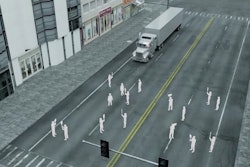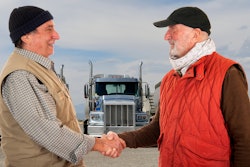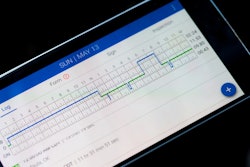
The term “community of learners” (COL) has been around for decades in education. COLs emerge when interest and knowledge are shared among learners. The idea is to empower learners to collectively learn together and build on each other’s knowledge instead of assimilating knowledge by what they are told.
These types of environments can be created when learners are given the environment to share information and experiences in pursuit of deepening their understanding.
COLs have been seen in K-12 and higher education longer than anyone can probably remember. However, this concept has not made the translation into the transportation industry in training, despite technology coming a long way. In fact, the only resemblance of COLs can typically be seen on carrier’s social media accounts.
The benefits of COLs are well documented in the research for learning and for engagement both in physical and virtual classrooms. This discussion will provide an overview of the benefits of COLs, as well as the challenges and tips for overcoming these challenges.
The Benefits
The benefits of COLs are widely documented in education because they:
- Require learners to think abstractly and build on existing skills and knowledge structures.
- Use real-world experiences to make applications relevant to the learner’s immediate lives.
- Show learners that you value the knowledge they bring to the learning experience.
- Supports learners’ abilities to work, learn and communicate with others.
- Keep engagement going during and beyond the formal educational learning experience.
The Challenges in Transportation
If this educational practice has shown wide benefits in education for decades, why don’t we see more evidence of it implemented in trucking? Given our time in the industry, the main barriers to implementation appear to be threefold:
Challenge No. 1: The Role of the Learner
The traditional interaction mode in trucking is instructor to learner and learner to content in a physical classroom.
In these two models for learning there is a dissemination of knowledge that is bestowed upon the learner. It is assumed that if you say something once, you will learn. There is also a strong belief in trucking that the instructor has to be in front of the learner to learn: “They watch me and I know they learn it.” Moreover, the thought is that they have to force the learner to learn by locking them into a particular path and format of content for learning.
Challenge No. 2: Time
The second challenge we hear is that carriers do not have time to build COLs. The task seems so daunting to add something else to an already full plate. Where do I find the time? The thought of having to learn a new technology or introduce drivers to a new technology can be an insurmountable task.
Pause and consider how much time and money are spent with recruiting and retaining drivers, and then ask yourself "What if building a COL can help you engage your drivers and ultimately save you time and money?"
Challenge No. 3: Technology
“Drivers still use flip phones and can’t participate in COLs?” Yes, we hear this and it is true. Building COLs virtually can be difficult if a driver does not have access to technology. One valid concern is if they have access to the technology, will they be able to use it?
Technology should not be the barrier to building COLs. Drivers can participate even with a flip phone.
Tips for Overcoming These Challenges
1. Evaluate the role of the learner
We know in education that there are many different mediums and interaction modes that promote learning. There is not one way to learn and you certainly do not promote engagement by forcing learners through a particular path and medium to learn. Most adults want some choice in how and what they learn. Trust your learners to have knowledge and then transition your role to that of a coach that can shape their knowledge.
Provide opportunities for the learner to interact with other learners in a virtual space, but provide them some structure and questions to succeed. Consider posting challenge questions that get learners to share their own experiences with each other. You can do this in an asynchronous (not in real-time) discussion board or synchronous (real-time) communication technology.
Example challenge that you would post online:
We want you to think like a mentor driver. What would you tell a new driver about speeding? Why should a driver avoid speeding? Share a picture or a video and a description of your own experience.
Learners can respond to this for a period of time in a discussion board and then the coach can come in to clarify, build on, and push alternative perspectives. Do not be quick to “tell them the answer.” Give them time to share and reflect on their experiences.
2. Time
It is true that a safety director’s time is limited. Use drivers you trust to serve as mentors and coaches in the asynchronous sessions. Consider having more than one person overseeing the COL. Make it a desired and recognized position to empower everyone involved at the organization.
3. Technology
If a driver does not have access to a computer, a tablet, or a Smartphone, the carrier could offer the experience in both asynchronous or synchronous formats. If there is only one person in charge of the training, it could be that the discussion board option is offered to run for two weeks, and then the following two weeks could be a follow up or the same discussion in a synchronous format. The driver would just call in and would not need a screen to be part of the community of learners. They may want to see their peers and you may find them wanting to trade in their old flip phone.
In closing, there are strategies, like COL in education, that have the potential to make a difference with driver engagement and retention in trucking. It is an exciting time to see carriers who are innovating in these ways with their educational programs.
Gina Anderson is CEO of Luma, a learning and instructional design company that has been working in trucking since 2014 and in K-12 and higher education for over two decades to make a measurable difference in learning outcomes. Anderson has her doctorate in Instructional-Systems Technology from Indiana University and a minor in Learning Science. Luma is currently conducting case study research on how building COLs in trucking could help with recruitment and retention of drivers.










